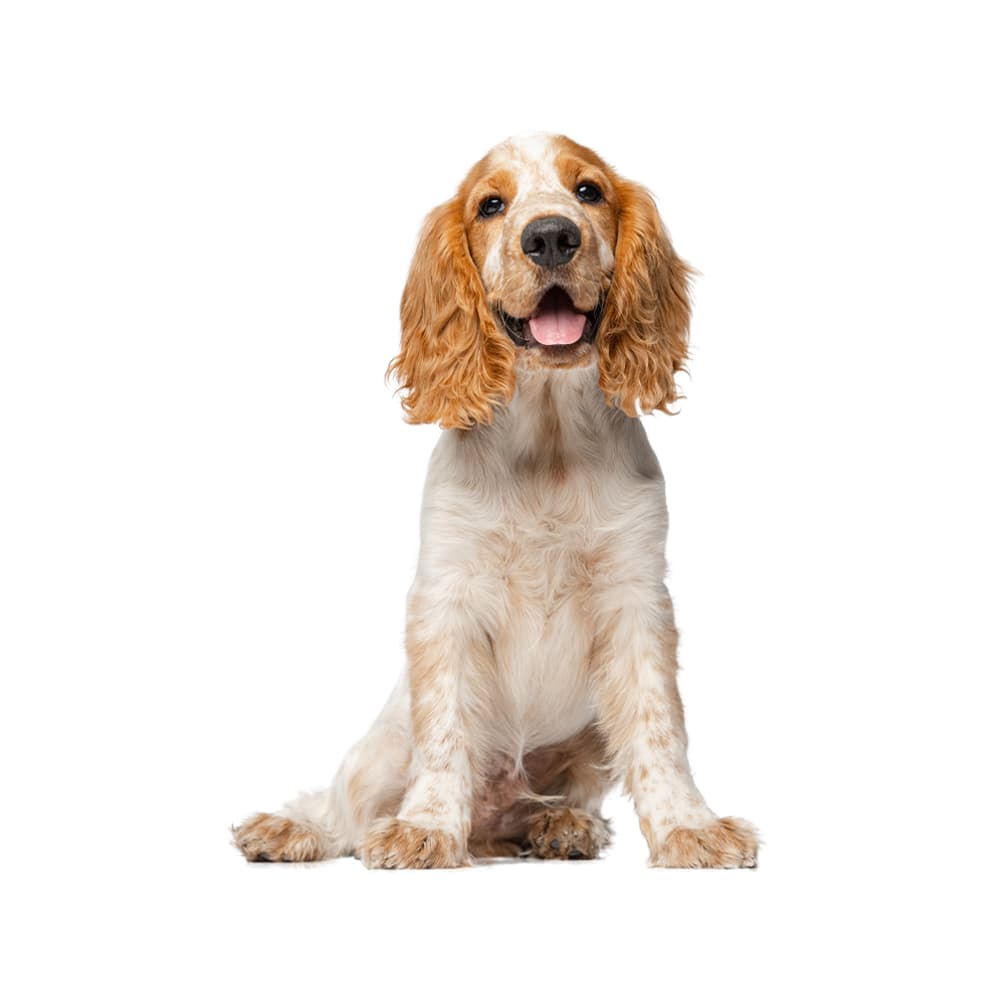Discover your dog's connection to this breed and 200+ others


Discover your dog's connection to this breed and 200+ others



Cocker Spaniels, recognized by the American Kennel Club (AKC) in 1946, trace their roots back to Spain. As part of the spaniel family, they were initially bred for bird flushing and retrieving, especially for the game known as woodcock—thus, their name "Cocker" (AKC). Their popularity boomed after World War II, thanks to the publicity they received from various celebrities, including President Richard Nixon, who owned a Cocker Spaniel named Checkers. The breed's popularity has remained steady, with these dogs being valued for both companionship and show.
Cocker Spaniels are prone to eye disorders including glaucoma, cherry eye, progressive retinal atrophy, progressive rod-cone degeneration, cataracts, ectropion, and entropion. They can also suffer from phosphofructokinase (PFK) deficiency, urinary stones, epilepsy, elbow and hip dysplasia, patellar luxation, and gastric torsion. Other conditions that affect this breed include hypothyroidism, hip dysplasia, allergies, otitis externa, seborrhea, cardiomyopathy, congestive heart failure, and liver disease. Additional conditions may include exercise-induced collapse, degenerative myelopathy, familial nephropathy, skeletal dysplasia 2, Bernard-Soulier syndrome, acral mutilation syndrome, and chondrodystrophy and intervertebral disc disease (CDDY and IVDD risk) with or without chondrodysplasia (CDPA).
Cocker Spaniels are known for their friendly, affectionate, and sociable demeanor. They are excellent with children and other pets, and they're generally eager to please, which makes training typically straightforward. Despite their hunting origins, they are usually content as companion animals, and they adapt well to various living situations.
However, without regular exercise and mental stimulation, they can become bored and destructive. Some may also exhibit "resource guarding," or protective behavior over food, toys, or territory. Regular training and socialization from a young age can help manage these tendencies and ensure a well-rounded pet.
A canine genetic lineage is a group of individuals or entire breeds that descended from common ancestors predating modern breed formation. Often these lineages are associated with a ‘type’ of dog with a unique historical working role and associated behaviors (e.g., herding, scent hunting, etc.).
The Pointer-Spaniel lineage encompasses both pointer and spaniel breeds. They were both bred for their specialized hunting abilities in Europe. Pointers locate game and freeze in a stance, called “pointing”, to indicate to their hunter that birds are close by. Spaniels were bred to find game in underbrush and retrieve it. Both pointer and spaniel breeds were bred to enhance their strong senses, trainability, and endurance as these are advantageous in a hunting partner. Spaniels and pointers are known for their strong work ethic, ability to work closely with humans and agility. These dogs’ ability to work closely with their hunters makes them an asset during a hunt because they follow direction well and know how their hunters want them to proceed.
Example breeds with ancestry from this lineage include English Cocker Spaniel, Irish Red Setter, and German Shorthaired Pointer.
In America, the Cocker Spaniel is the smallest sporting spaniel and is also one of the most popular purebred dogs.
In 1940 and 1941, a black Cocker named Brucie helped popularize the breed by twice winning Westminster’s Best in Show in England.
https://www.akc.org/dog-breeds/cocker-spaniel/
https://www.petmd.com/dog/breeds/c_dg_am_cocker_spaniel
https://www.pawprintgenetics.com/products/breeds/58/
Recommended by top vets with decades of experience
21 breeds
64 genetic health markers
50 genetic trait markers
